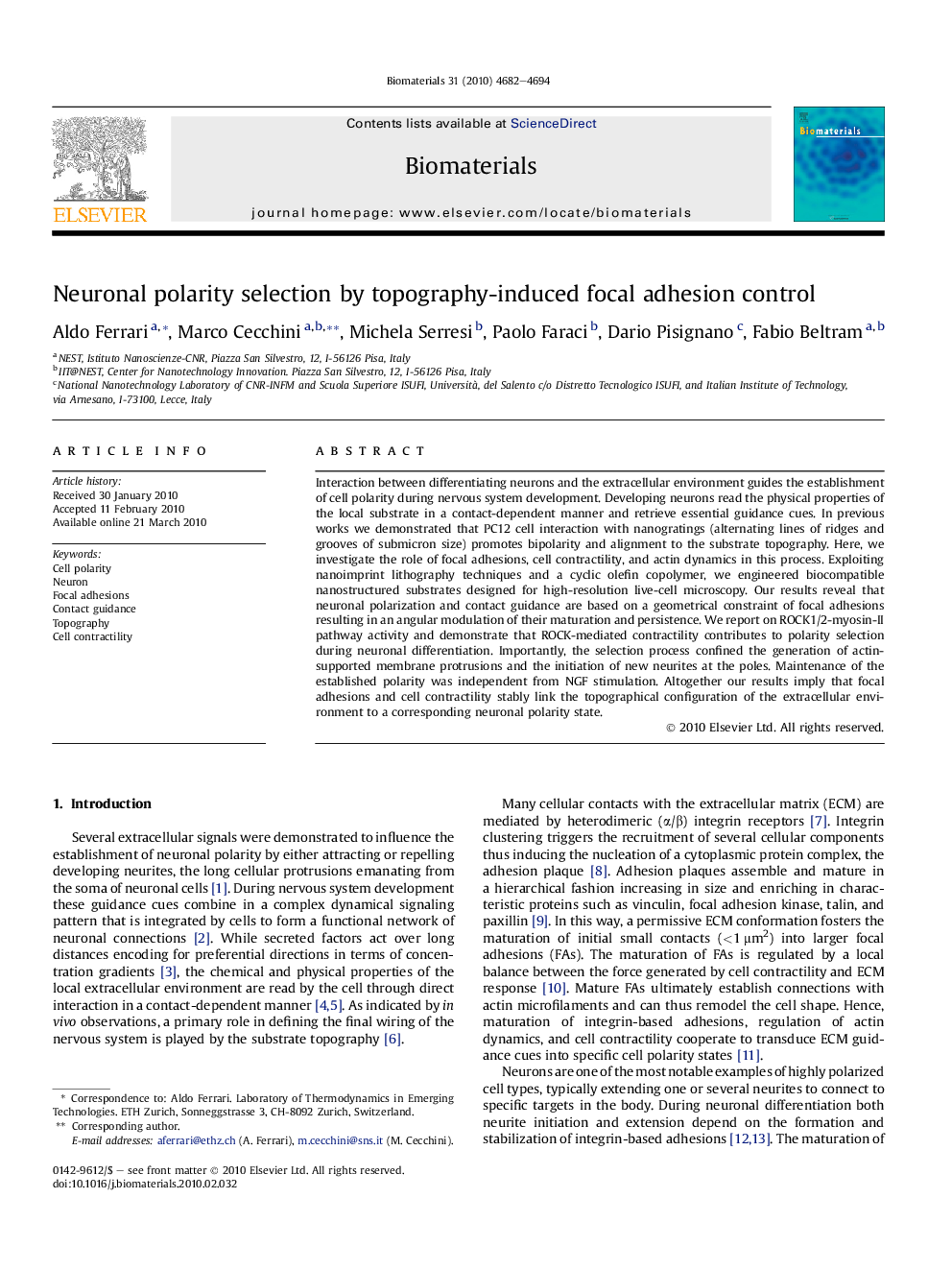| Article ID | Journal | Published Year | Pages | File Type |
|---|---|---|---|---|
| 9630 | Biomaterials | 2010 | 13 Pages |
Interaction between differentiating neurons and the extracellular environment guides the establishment of cell polarity during nervous system development. Developing neurons read the physical properties of the local substrate in a contact-dependent manner and retrieve essential guidance cues. In previous works we demonstrated that PC12 cell interaction with nanogratings (alternating lines of ridges and grooves of submicron size) promotes bipolarity and alignment to the substrate topography. Here, we investigate the role of focal adhesions, cell contractility, and actin dynamics in this process. Exploiting nanoimprint lithography techniques and a cyclic olefin copolymer, we engineered biocompatible nanostructured substrates designed for high-resolution live-cell microscopy. Our results reveal that neuronal polarization and contact guidance are based on a geometrical constraint of focal adhesions resulting in an angular modulation of their maturation and persistence. We report on ROCK1/2-myosin-II pathway activity and demonstrate that ROCK-mediated contractility contributes to polarity selection during neuronal differentiation. Importantly, the selection process confined the generation of actin-supported membrane protrusions and the initiation of new neurites at the poles. Maintenance of the established polarity was independent from NGF stimulation. Altogether our results imply that focal adhesions and cell contractility stably link the topographical configuration of the extracellular environment to a corresponding neuronal polarity state.
